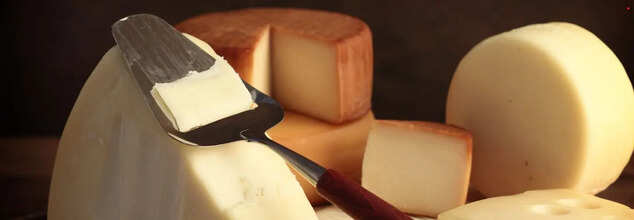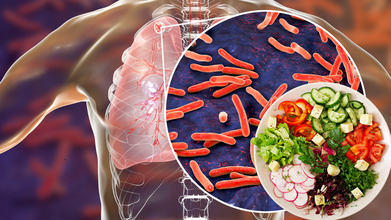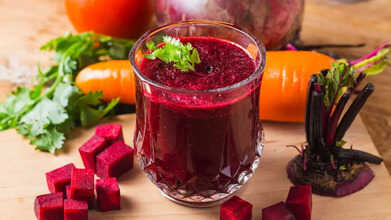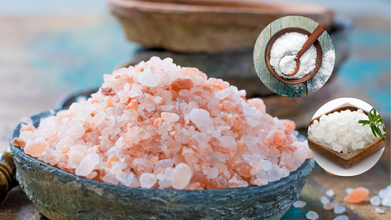- Health Conditions A-Z
- Health & Wellness
- Nutrition
- Fitness
- Health News
- Ayurveda
- Videos
- Medicine A-Z
- Parenting
- Web Stories
High Cholesterol Linked To Longer Life Spans In This Blue Zone

Credit: Canva
A recent study published in the journal Nutrients has challenged long-standing perceptions about cholesterol and longevity. Conducted among nonagenarians in Sardinia’s Blue Zone, the research suggests that moderate hypercholesterolemia (where LDL-C is equal to or more than 130 mg/dL) may be associated with longer lifespans. However, this potential protective effect was not observed in individuals with excessively high cholesterol levels, particularly among women.
For decades, medical guidelines have emphasised the need to lower cholesterol levels to reduce cardiovascular disease risk. However, emerging evidence indicates that the relationship between cholesterol and health outcomes may be more nuanced, particularly in older populations. The Sardinian study, led by a team of Italian researchers, examined whether higher cholesterol levels could act as a marker of resilience in aging populations.
Known as the 'cholesterol paradox,' the phenomenon describes findings that indicate higher cholesterol levels may correlate with lower mortality rates in elderly populations. Some experts believe this could result from reverse causality, where declining cholesterol levels are a consequence of poor health rather than a cause. In this study, the researchers controlled for this by excluding participants with severe illnesses or poor self-rated health, yet the association between higher LDL-C and longer survival remained.
The study focused on a cohort of 168 nonagenarians (81 men and 87 women) from Sardinia’s Blue Zone, a region renowned for its unusually high number of long-lived residents. Data collection began in 2018 and continued until December 2024, during which 20 participants remained alive. To ensure the accuracy of their findings, the study included only those whose four grandparents were born within the Blue Zone, thereby reducing genetic variability.
Researchers assessed lipid profiles using blood samples collected after an overnight fast. Serum cholesterol levels, including total cholesterol, LDL, HDL, and triglycerides, were measured according to established guidelines. Participants were then categorized based on LDL-C levels, with a threshold of 130 mg/dL separating those with moderate hypercholesterolemia from those with lower levels.
The findings indicated that those with LDL-C levels above 130 mg/dL had a significantly longer median survival of 3.82 years, compared to 2.79 years among those with lower LDL-C levels. Statistical analysis revealed that moderate hypercholesterolemia was associated with a 40% lower mortality risk, even after accounting for factors such as sex, smoking status, and comorbidities. Interestingly, however, total cholesterol levels above 250 mg/dL did not confer additional survival benefits and were linked to shorter lifespans in women.
The study also highlighted lifestyle factors that may influence the cholesterol paradox. Over 85% of male participants and 69% of female participants reported engaging in physical activity at least three times per week, suggesting that exercise may play a role in mitigating the risks associated with elevated cholesterol levels.
Moreover, dietary habits emerged as another potential factor. Participants with higher LDL-C levels reported greater cereal consumption, while those with lower non-HDL cholesterol levels consumed more olive oil. However, the study did not assess dietary intake over time, making it difficult to draw definitive conclusions about diet’s role in the observed associations.
While these findings suggest that moderate hypercholesterolemia may not be as detrimental for very old individuals as previously thought, the researchers emphasized that the study’s limitations warrant caution. The relatively small sample size, single-point cholesterol measurement, and focus on a genetically unique population mean that the results may not be generalizable to other groups.
Nevertheless, the study raises important questions about current cholesterol management guidelines for older adults. As life expectancy continues to rise, it may be necessary to adopt more individualized approaches to cardiovascular health, considering not just cholesterol levels but also genetic, dietary, and lifestyle factors.
WHO’s Latest TB Guidelines Highlight Nutrition as Key to Treatment

Credits: Canva
The World Health Organization (WHO) has released new guidelines, which would tackle tuberculosis (TB) and under-nutrition together. The WHO has recommended that food assistance must be provided to households with TB patients and the undernourished or food insecure must be screened for the disease.
This has come after the Reduction Activation of Tuberculosis by Improvement of Nutritional Status (RATIONS) trial by Indian researchers. This has inspired a global shift in the TB policy.
What Are The RATIONS trial?
These trials were conducted in Jharkhand and were published in The Lancet and The Lancet Global. The trials highlighted the vital role nutrition plays in the reduction of mortality among people who are living with TB. It also helps in reducing the incidence among household contacts of pulmonary tuberculosis patients.
The ICMR-supported RATIONS trial were also led by a research team headed by Dr Anurag Bhargava and Dr Madhavi Bhargava from Kasturba Medical College and Yenepoya Medical College, respectively.
The studies also showed that weight gain in the first two months was associated with a 60% lower risk of TB mortality. It also showed higher treatment success and also a decrease in loss to follow-up.
How Does Nutrition Help With TB Patients?
As per a 2009 study published in the Lung India, the Official Publication of Indian Chest Society, in patients with TB, it leads to reduction in appetite, nutrient malabsorption, micronutrient malabsorption, and altered metabolism. The study notes that both, protein-energy malnutrition and micronutrients deficiencies could increase the risk of TB.
The study revealed that malnourished TB patients experience slower recovery and higher mortality compared to those who are well-nourished. Nutritional status often improves during TB treatment, but high rates of HIV in developing countries worsen the impact of malnutrition on the disease.
Childhood TB and tuberculin skin test outcomes are also affected by poor nutrition. Experts suggest that nutritional supplementation could support faster recovery in TB patients, while improving overall population nutrition may serve as an effective strategy to control tuberculosis in underdeveloped regions.
What Should One Eat To Recover From TB?
The Nanavati Max Super Speciality Hospital on its website notes that dietary guidelines play a crucial role in the management of TB. So, what must someone recovering from TB consume?
Protein-rich Foods
Foods like eggs, lean meat, poultry, fish, beans, lentils and nuts are excellent sources of protein. Consuming protein-rich foods help in prevention of muscle loss, and promoted healing.
High-calorie Foods
Extra aid in recovery is never too bad, thus consuming high-calorie foods can provide the necessary energy one needs while recovering. Some high-calorie food that can also be included in the diet are: yoghurt, dried fruits, whole milk, peanut butter, nuts, cheese, avocados, dark chocolate and granola bars.
Micronutrients
Studies too have shown that micronutrients are essential, and they play a crucial role in maintaining the immune system. Thus, one can add leafy vegetables, berries, citrus fruits, nuts and seeds.
Other things you can include are high-energy foods, good carbs, and some super foods. What you must avoid are fried foods, alcohol, smoking and processed foods.
ABC Juice: This Everyday Drink Could Be Your Secret Health Weapon, Nutritionist Explains How

Credits: Canva
Drinking juice is a simple and enjoyable way to add vital nutrients to your daily diet. Many people like to kickstart their mornings with a glass of fresh juice, whether it’s the popular green juice or the classic orange juice. Among the wide variety of wellness drinks, ABC juice has carved a niche for itself, offering health benefits that many other beverages can’t match. We spoke with Lena Bakovic, an experienced Registered Dietitian Nutritionist with over eight years in the field at Top Nutrition Coaching, who shared the many advantages of including ABC juice in your routine.
What Is ABC Juice?
According to Lena, ABC juice combines raw apples, beetroots, and carrots, creating a drink packed with essential nutrients. It offers fibre, antioxidants, and several micronutrients, including potassium, zinc, and iron. Here’s a closer look at each ingredient:
- Apple: Apples are loaded with fibre, vitamin C, potassium, and vitamin E. They support digestive health, promote heart health, and can help with weight management.
- Beetroot: Beetroots are nutrient-rich while being low in calories. They provide folate, fibre, vitamin C, potassium, iron, and even a small amount of protein.
- Carrot: Carrots are a great source of vitamin A, essential for healthy eyesight. They also contain potassium, vitamin B6, biotin, fibre, and vitamin K.
Benefits Of ABC Juice
Lena told us that ABC juice is generally low in calories, making it ideal for those keeping an eye on their weight. Its fibre content supports gut health, aiding digestion and overall intestinal function. The iron in the juice can also be helpful for those with iron deficiency anemia, potentially helping to replenish iron stores.
Additionally, the antioxidants in ABC juice may help fight free radicals, which in excess can contribute to chronic conditions like cardiovascular disease and certain cancers. While the juice’s nutrient richness may support immune health, strong scientific evidence is lacking. Similarly, claims that ABC juice boosts metabolism are not yet backed by robust clinical trials.
How To Make ABC Juice
Making ABC juice at home is easy and requires just a few simple steps. Here’s the method:
Ingredients:
- 2 apples
- 1 medium beetroot
- 2 carrots
- Optional: a splash of lemon juice or a small piece of ginger for extra flavour
Instructions:
- Rinse the apples, beetroot, and carrots thoroughly.
- Peel the beetroot and carrots.
- Remove the cores from the apples and chop them into smaller pieces.
- Cut the beetroot and carrots into chunks.
Juicing:
- Using a juicer: Feed the apple pieces, beetroot chunks, and carrot pieces into the juicer, collecting the juice in a container.
- Using a blender: Add the chopped apples, beetroot, and carrots to the blender. Blend until smooth, adding a little water if needed. Then strain the mixture through a fine mesh sieve or cheesecloth to separate the juice from the pulp.
- Add Optional Ingredients: Mix in a bit of lemon juice or a small piece of ginger for extra flavour if desired.
Serve:
Pour the juice into a glass and enjoy immediately to get the best taste and nutritional benefits.
Storage:
Any leftover juice can be kept in an airtight container in the fridge for up to 24 hours.
Enjoy your refreshing, nutrient-packed ABC juice!
Pink Salt, Sea Salt, Celtic Salt: Are They Really Beneficial Or Just Some Fancy Names

Credits: Canva
Social media platforms have taught us a lot about health, but sometimes, it has also tricked us into believing things which may not be in the best interest of us. Now, we are hearing more and more about the trend of using Himalayan salt and replacing the table salt, which we would commonly use. For some, using this salt in beverage helps them lose weight. While for others, the variants like Celtic salts and seat salts are mineral-rich alternatives. However, doctors say otherwise.
What Is The Reality of Pink Salt, Sea Salt And Celtic Salt?
Celtic Salt is unrefined and non-processed salt without harsh chemicals or anti-caking agents. It naturally contains a wide array of minerals, including magnesium, calcium, potassium, zinc, and iron, in addition to sodium chloride.
While sea salt has the same mineral compounds, it is more dry in nature and has more variation in texture, from ultra-fine grains to large, and even flaky crystals.
Pink salt or Himalayan salt is a type of rock salt, which is mined from Khewra Salt Mine in Pakistan, and is known for its distinctive pink hue from trace minerals like iron and potassium. It is natural, unrefined, and is known for the mineral-rich component that it is.
However when doctors are asked whether such unrefined, raw, and mineral-rich salt should be substituted for the regular table salt, their answer is "No".
Dr Shipra Gulati, consultant physician at Sir Ganga Ram Hospital said that any form of rock salt, while rich in mineral, is associated with thyroid problems. Why? Because these salts lack iodine, which is present in common salt. Absence of iodine leads to thyroid problems, notes the World Health Organization (WHO). This is why the government of many countries have iodised the salt so thyroid issues could be prevented. When one substitutes any other salt with regular iodised salt, then the risk to thyroid, brain damage and mental retardation increases.
What About Blood Pressure?
Dr Gulati also cites examples of where people replace rock salt with regular table salt stating hypertension reasons. However, she says, "the component of sodium chloride is same in both the salts". Thus, replacing the salt will not be fruitful.
What About The Minerals?
Health guidelines by American Heart Association suggests the upper limit is 2,300 mg, which is roughly 1 teaspoon a day. Experts point out that in order to actually utilise the minerals present in other salts, one must consume more than the recommended levels of salt, as consuming just 1 teaspoon a day will not make any difference in terms of the minerals. However, if more than this amount is consumed, it could trigger high blood pressure, as sodium chloride are almost same for all the salts.
Dr Susan Cheng and Dr Evan Levine, two cardiologists, reported by Today.com noted that using too much "fancy" salts could be more detrimental to your health.
Dr Cheng says that coarser texture from rock salt, Celtic salt or sea salt and their larger crystal could make it simple to unknowingly overuse them. "The satisfying crunch makes you feel like you're using a little bit, but really you're adding a lot of extra sodium."
Dr Levine suggests: "Don't fall for the salt hype". Dr Levine also bursts health myths on TikTok and says that many people consume the alternatives for being "less processes". However, "it is sodium chloride, just like your regular salt. The so-called benefits are negligible. You are still eating salt."
© 2024 Bennett, Coleman & Company Limited

